In a new collaborative effort to develop better catalysts for energy applications, computational and experimental chemists are joining forces. Hayley Birch reports
In a new collaborative effort to develop better catalysts for energy applications, computational and experimental chemists are joining forces. Hayley Birch reports
Just east of the Mississippi River in Baton Rouge, US, is a research facility that appears, to the eye of any passing satellite, as a 60m wide pie chart divided neatly into eight pieces. Housed inside the pie is a synchrotron particle accelerator. And it is to here that chemists at the nearby Louisiana State University (LSU) take the short drive when they want to test out the materials they’ve been working on.
Despite packing rather less power than some of its European counterparts, Louisiana’s J. Bennet Johnston Jr. synchrotron is the only sizeable synchrotron facility in the southern states and is now the focus of a multimillion dollar energy research project. The synchrotron’s beams play a crucial part in the x-ray-absorption and x-ray diffraction experiments used to characterise the catalyst materials that LSU researchers are making at their new government-funded Energy Frontier Research Center (EFRC). They probe deep into the atomic level structure of catalyst materials, providing intricate details of the chemical environment of single atoms - something that, says centre director Jerry Spivey, no other technique can do.

Bringing together researchers from nine different institutions, including one on the other side of the Atlantic, this EFRC aspires to be a hub for cutting edge research in catalyst design. As one of 46 EFRCs established in the US last year, Louisiana’s is not, on the face of it, the most ambitious. While CO2 storage and solar energy projects banked sums approaching $20 million (?13.2 million), LSU was awarded a modest $12.5 million. But Spivey has a plan: by encouraging computational and experimental chemists to work in close harmony, he is setting a precedent for a more collaborative approach in the field of nanostructured catalyst design; one that he hopes will be faster and more successful at producing efficient catalysts for energy applications.
Building bridges
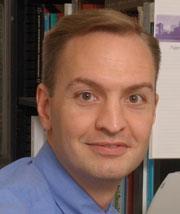
Computational and experimental chemists haven’t always seen eye to eye - each work with different tools and, often, produce very different results. Even Spivey, an experimentalist, jokes that some of the computational people he’s working with on his energy project ’have never seen the inside of a lab’. Fortunately, however, Spivey was happy to show them around. ’As part of our kick-off meeting, we took them to the synchrotron facility and said, "here’s how we characterise the materials that you told us ought to work",’ he says.
Clearly, there’s still something of a divide between the two camps. But Spivey has brought in David Bruce - a long-time colleague, not to mention tennis opponent, from Clemson University in South Carolina - to try to close the gap. Bruce is one of a rare breed of chemists dabbling in both computational and experimental studies. As someone who can identify with both camps, he was an obvious choice when it came to selecting a coordinator for the computational effort at the centre. ’Jerry wanted to have a centre where all the researchers would interact with one another and one of the key problems there has been in the past is getting people who do the computational work to talk to people who are doing the experimental work,’ says Bruce. ’So the fact that I did both made him think I would be a good motivator to bridge that gap.’
Catalysing change
This more collaborative approach is what Spivey believes is needed to make real headway in the science of computational catalysis. Thus, his intention for the five year EFRC project is not to create better catalysts per se, but to advance the science of computational catalysis more generally. The 10 projects discussed in the initial meeting last October each focus on specific reactions - one, for instance, focuses on developing catalysts for the photoreduction of CO2 to methanol. But as Spivey points out, the objective of that project - somewhat perversely - is not to develop a catalyst for the photoreduction of CO2. Rather, it is to advance the technology of computational catalysis, synthesis and characterisation using that reaction as an example. In this sense, says Spivey, the award that was made was no typical research grant.
Nevertheless, if any of these projects is successful, one of the outcomes should be better catalysts. Bruce’s broad focus, under the remit of the LSU EFRC, is on developing more efficient catalysts for the production of alternative fuels. His lab is interested in catalysts for the conversion of syngas (carbon monoxide and hydrogen) into alcohols such as ethanol and propanol, as well as catalysts for fuel cell applications. As he points out, the kind of materials that are useful for those different applications tend to be quite similar, with many involving transition metals loaded on top of oxides.
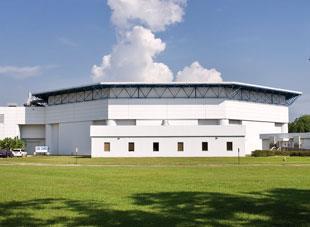
But finding the best materials, says Bruce, requires not only a collaborative approach but an immense amount of computing power. Rather usefully, Clemson is one of the top 50 establishments for supercomputers in the world. In the first step, computational chemists in Bruce’s lab use quantum simulations to estimate what kinds of structures would form in a given reaction, how the molecules would interact and what the energy barriers are. ’What my students are doing on a daily basis is sitting in front of computers, manipulating make-believe atoms on a screen, and positioning them where they would start out in a simulation,’ he explains. ’The computers then go in and try and optimise what would really happen and anywhere from three days to two weeks later, many processors on a big computer will come back and say "here’s the answer".’ The information they glean can then be handed over to Spivey and his team at LSU, who make the catalysts, characterise them using the synchrotron, and, ultimately, test them to see whether they live up to expectations.
Described like this, the process sounds pretty neat. But will it actually yield any useful catalysts? Spivey certainly hopes so. He says it could lead to the centre being able to identify catalysts that no one would even consider making otherwise - ones that would have been almost impossible to predict without the brain of a supercomputer. He admits, however, that it’s not yet the straightforward process it ought to be. And one of the biggest challenges facing those creating catalysts in the lab is controlling the size and shape of the metal catalyst particles they make.
The circle that never stops
Historically, it has been very difficult for experimental chemists to make exact matches for the virtual materials that computational chemists manipulate in their models - experimentalists might, for example, be able to make a bunch of gold nanoparticles within a given size range, but not all of them will be exactly the same. And according to Challa Kumar, a nanofabrication specialist working at the LSU EFRC, making these uniformly sized nanoparticles is still proving to be quite a challenge. Very recently, he explains, there has been a rush to try to synthesise very small particles - in the subnano range - and while it is now possible to get uniform distributions of metal particles above 1nm, it is rather trickier below. Within the scope of the EFRC, the goal of Kumar’s lab is to develop a ’toolbox’ that will enable them to do just that. Taking gold as a starting point, as there is already some precedent in making subnano gold particles, they plan to translate their methods into other types of metal clusters, as well as clusters that combine more than one metal.
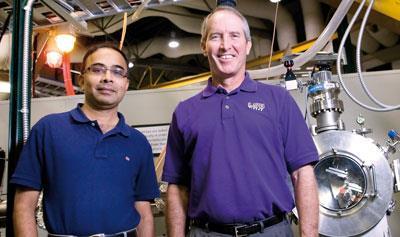
Kumar says a collaborative approach between computational and experimental chemists is ’the only approach’ that can yield any further progress along this route; the old-fashioned method of trial and error has reached its limit. Under the new regime, surface characterisation specialists - like those working at LSU’s synchrotron facility - and nanofabrication experts must interface with computational chemists to understand exactly what it is that makes a particular metal cluster a good catalyst. ’It’s a circle that never stops,’ says Kumar. ’On the one side, are computational tools and what we learn from those we use to design very specific metal clusters with the required defects, and size, and size distribution, and crystal structure. And then we give our data back to the computational scientists to further evaluate, or further support, their ideas.’
The EFRCs
The 46 EFRCs are sprinkled across the US, with concentrations running up the east side from Maryland to Massachusetts and along the coast of California. Funding was announced last April, alongside the Recovery Act, which provided $21.5 billion for science and technology. While some are funded with money from the Recovery Act itself, most, including Louisiana’s, are funded through the Department of Energy.
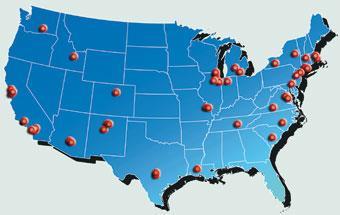
’Our centre is not funded with stimulus money and that’s an advantage because that money, I think, is less dependable than the money that we have,’ says Spivey. Four other centres focus on catalysis and two of these are developing catalysts for biomass conversion. Louisiana’s is unique, notes Spivey, because it is the only one that has the strategy of coupling computational catalysis with synthesis and characterisation.
Using their intuition
In this respect, Bruce says closer collaborations between computational and experimental chemists are really going to start paying off. ’It enhances the computational side, because if we know that we’ve modelled, say, a 1nm metal particle with 20 metal atoms in it, and then we say "please go make us a metal particle with 20 metal atoms in it", and they can, then the experimentalists can test the exact thing that we modelled.’ Other challenges remain, however; before Bruce’s lab can even think about putting in an order for 20 atom nanoparticles, they need to know what metals they’re starting with, and all they can rely on for that, says Bruce, is chemical intuition. So when it comes down to it, it’s just making a list of the sorts of metals they think might work - metals like palladium, copper, cobalt and gold - and feeding them into a computer. As Bruce explains, it’s nowhere near possible to sit down at a computer and tell it: ’this is the reaction I care about. Give me the catalyst that will be best.’ But, he adds, it’s getting there.
Like Bruce, Spivey dreams of one day being able to sit down at a computer and have it develop the ideal catalyst for a given reaction; all being well, he could then just go to the lab and make it. ’That’s the goal of our centre and if we had even made measurable progress towards that in five years, I would be ecstatic, because some of the best minds in the world are working on this and progress is slow,’ he says. He also points out that even today’s supercomputers don’t have unlimited power and so what they usually provide are hints, or insights, as to what might make a reaction work, rather than a complete blueprint for a catalyst.
Pay up or shut up
For now, though, money troubles are uppermost in Spivey’s thoughts. Although his centre is funded for a full five years, with the possibility of renewal at the end of the first three, the budget for the synchrotron facility is less than secure. Being the only state-funded synchrotron in the US, it’s Louisiana state that will decide its future and currently it’s not looking bright. Budget cuts in the last year have already left the facility with a funding deficit of $1 million and forced a number of staff out of their jobs. Somewhat incongruously, it was also the state that stumped up the final million for the LSU EFRC, bring its total starter funding to $13.4 million - cash that may turn out to be wasted if Louisiana doesn’t continue to fund the synchrotron.
Spivey can’t stress the importance of the synchrotron to his centre strongly enough: ’that facility was, I believe, essential to us getting the award and it is essential to us doing what we told [the Department of Energy] we were going to do.’ Without it, characterising catalysts becomes a much harder task. And the ’cycle’ - the iterative process by which the EFRC’s catalysts are designed, created and improved upon - breaks down completely. Not only that, the synchrotron is also an important part of the attraction for students embarking on postgraduate studies in Spivey’s lab - students that Spivey hopes, as research scientists, will go on to adopt the same collaborative ways of working that he is promoting at the LSU EFRC.
Hayley Birch is a freelance science writer and editor based in Bristol

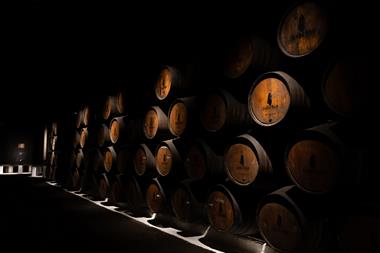
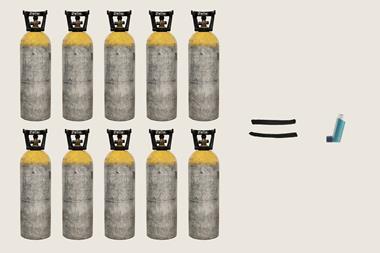


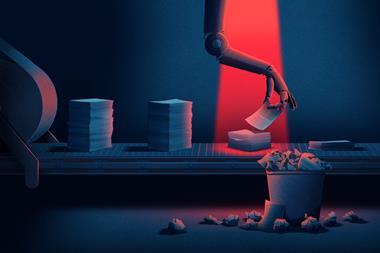
No comments yet